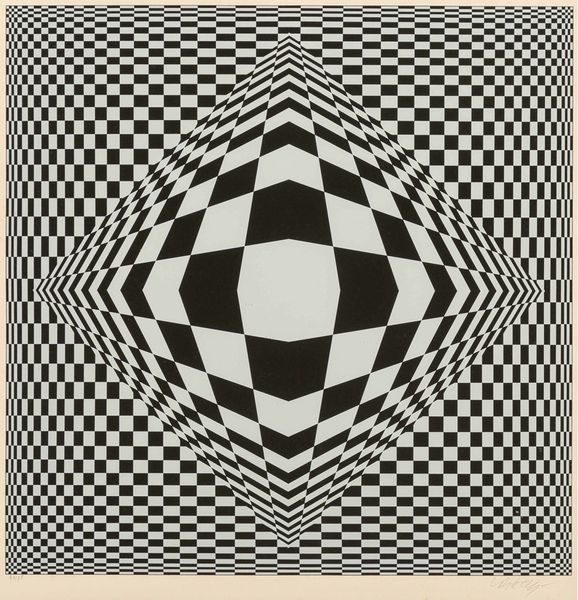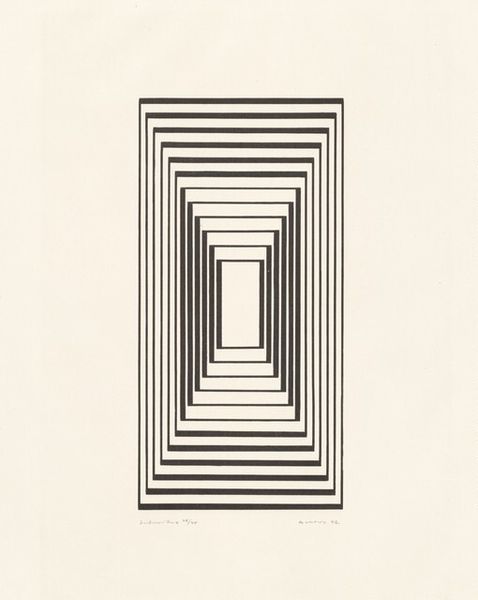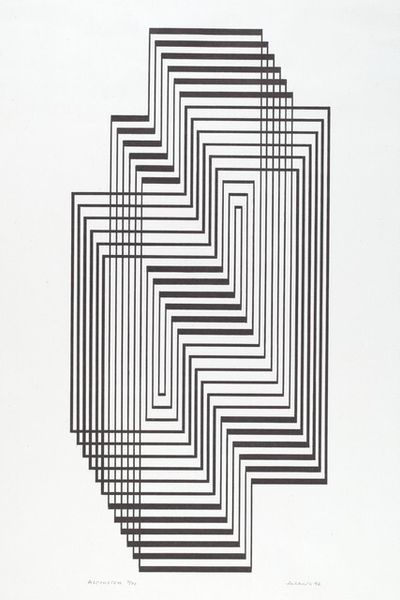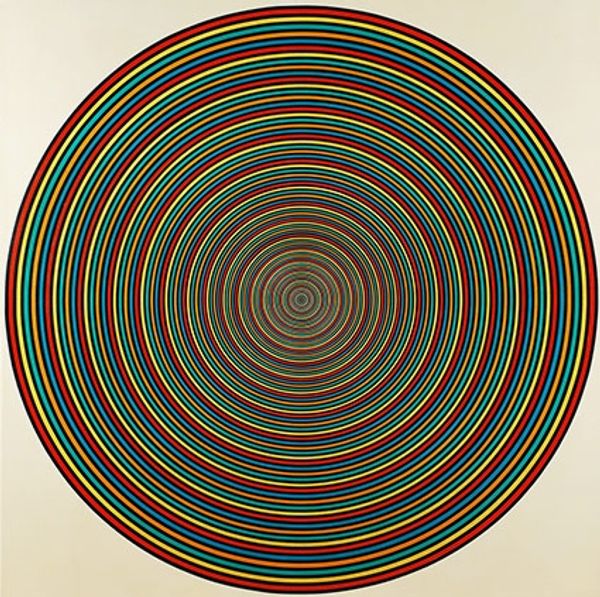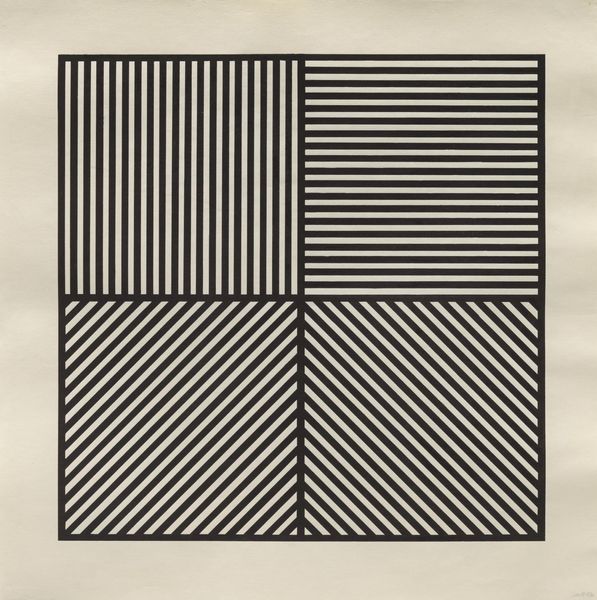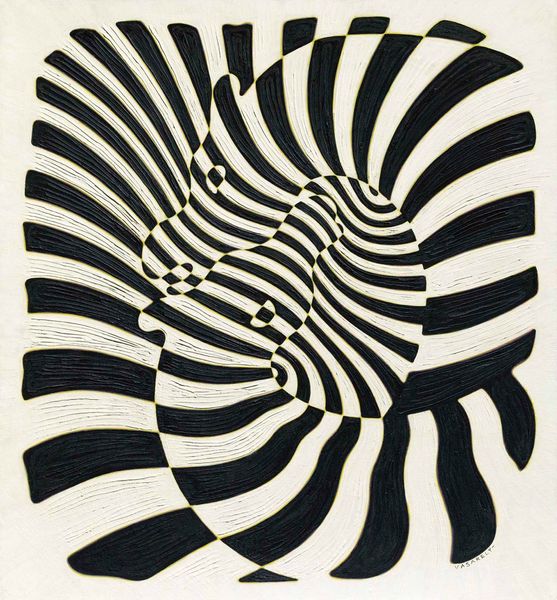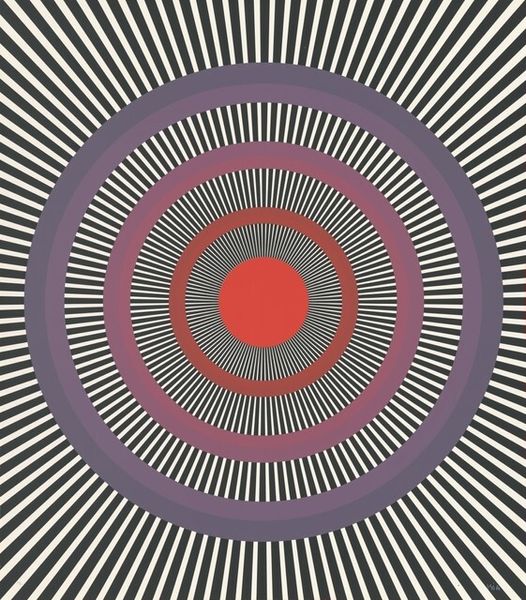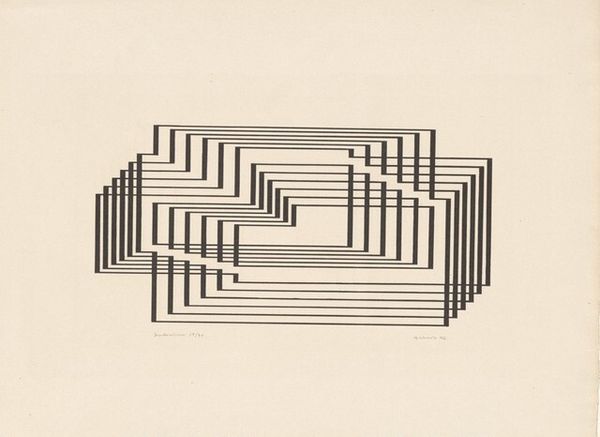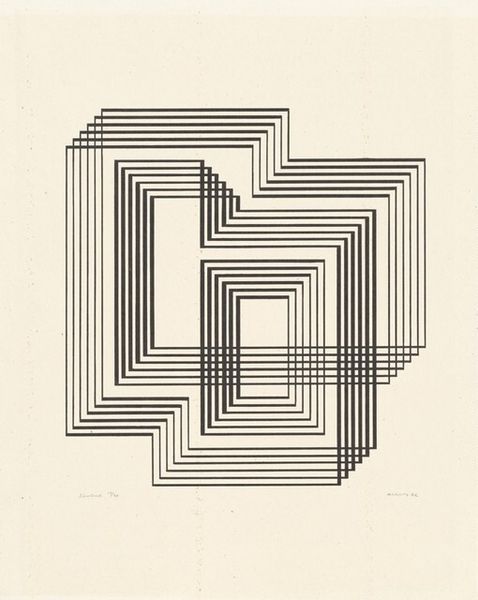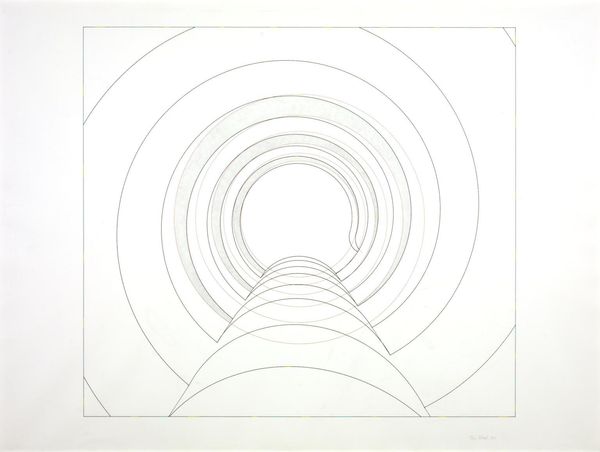
#
pop art-esque
#
shape in negative space
#
negative space
#
circle
#
dark black outline
#
optical illusion
#
gestalt
#
limited contrast and shading
#
a lot negative space
#
remaining negative space
#
reptilian
Copyright: Bridget Riley,Fair Use
Curator: Let’s turn our attention to Bridget Riley's "Blaze 1," created in 1962. This striking piece is part of the Scottish National Gallery's collection in Edinburgh. What are your initial thoughts? Editor: Dizzying. It’s almost oppressive, isn't it? Like staring into some sort of vortex. The contrast feels very immediate, very present. It seems to push the boundaries of what a flat canvas can contain, or rather, what a flat canvas is allowed to make the eye believe. Curator: Absolutely. Riley's work is fascinating because it arrived during a period of significant social shifts. Remember, this was the early 1960s, a time of experimentation and questioning of established norms. Op Art, in general, reflects a society increasingly focused on visual culture and the psychological effects of media. The deceptive depth of her work surely ties into an exploration of those emergent social preoccupations. Editor: That makes sense. To me, it screams about the actual act of *making* the art itself. The precision... can you imagine the labor involved in plotting each one of these black and white bands? I see this not as a window into the media landscape as you put it, but a painstaking manual process. Each zigzag, carefully calibrated and the effect only happens through slow, intentional making. It also begs the question of its own distribution; this wasn’t some quickly and widely disseminated image, but a handmade intervention, that, while alluding to mass culture, remains deeply handmade. Curator: A valid point! But it's important to understand how "Blaze 1" engages with perception and challenges viewers' expectations, sparking broader dialogues about seeing and experiencing, about what’s happening to people, and how they're relating to others during this transition. That period had more access to imagery and media than most ever knew before it. Editor: I suppose you could interpret the optical illusion as a metaphor for a mediated reality – constantly shifting, sometimes deceptive. But to my mind, the art has value both conceptually *and* physically. The quality of materials themselves— the particular paint and medium she used—and of course how that plays out, informs my interpretation too. Curator: It certainly speaks to different perspectives. In conclusion, Riley’s 'Blaze 1' provides a point of reference and conversation regarding human interpretation of image. Editor: Yes, seeing is always subjective; maybe that's the ultimate point here!
Comments
No comments
Be the first to comment and join the conversation on the ultimate creative platform.

